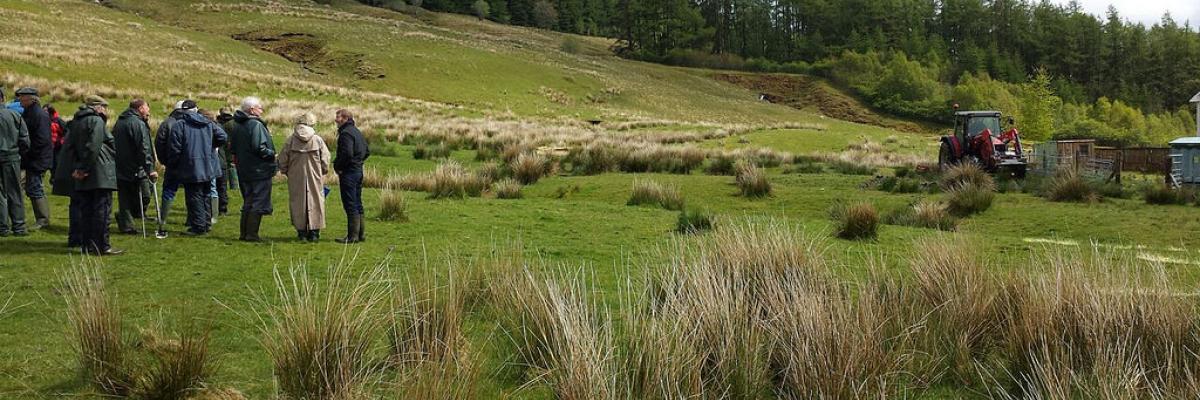

Controlling Rushes Without Chemicals
View the website
This webpage hosts information on a field lab run on farms and holdings across Scotland to tackle soft rush infestation and explore sustainable rush control. It investigated different ways of controlling rushes without chemicals; aiming to improve grass and clover swards, livestock productivity, and profit margins. From here you can access notes on rush management in relation to drainage and soil structure and soil pH and nutrients, cutting rushes (topping and mowing), selecting suitable grass and clover species for reseeding, managing areas of rushes with biodiversity in mind, and reseeding cultivations. There is also information on two farm case studies and other useful resources; including a presentation outlining the benefits of improving marginal grassland and different points to consider, management tips in relation to providing good breeding habitats for wading birds, an AHDB guide to management and control of common soft rush, and various soil guides produced by the AHDB and SRUC.
- The field lab aims were:
- Improve livestock and silage or hay productivity;
- promote long-term investment in grassland production (reducing reseeding and weed control costs);
- and improve biodiversity and wading bird habitat (potentially providing additional income through agri-environmental schemes).
- Successful and sustainable rush management is achievable if the same essentials as those of good grassland management are addressed; drainage, soil structure, soil pH, and the soil nutrients phosphate and potash. This can be costly and time consuming, so prioritise your more productive fields.
- If the cost of addressing the grassland management essentials does not justify potential production benefits, consider managing the grassland for biodiversity (you can access information on biodiversity for wader grazed and species-rich grassland).
- Cutting rushes at the right time can reduce heavy infestations, prevent plants from seeding, allow grass and clover to compete, and exhaust plants, depleting their root systems.
- Grazing can help control the spread of rushes. However heavy grazing can cause poaching and compaction and encourage dormant seed germination.
- A successful reseed (ideally carried out in the spring), can help control rushes and introduce new grass species that will benefit your production. You can access details on grass and clover species that are persistent and suitable for more marginal land and longer-term leys.
(Photo credit: Colleen McCulloch)
